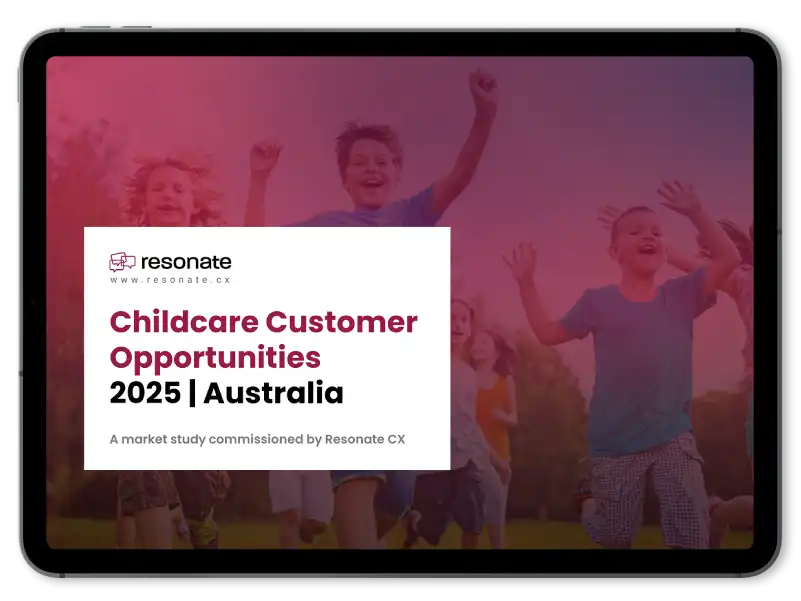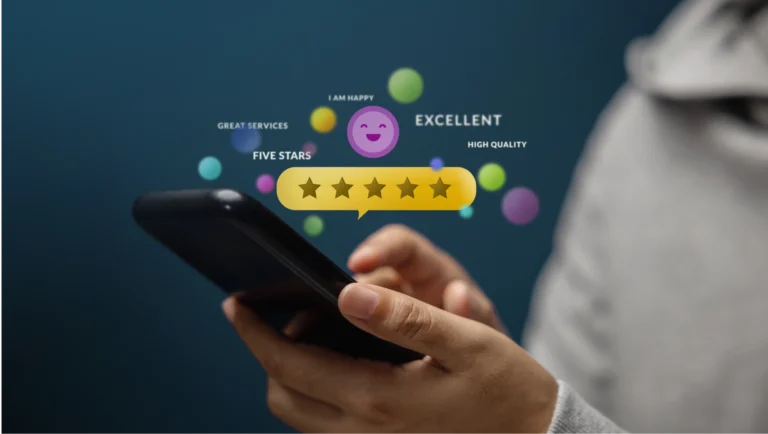Ever felt like you and your business are on different planets when it comes to your customers?
You’re trying your best to keep them happy and have a positive experience, but they just don’t seem to be feeling it. That’s where CRM and CEM or CXM come in, folks! These two concepts are like the Han Solo and Chewbacca of customer satisfaction – they work better together than they do apart.
Imagine you’re running a pizza joint. You know your customers by name, their favorite toppings, and maybe even their preferred crust (thin and crispy, or fluffy and deep dish?). That’s kind of like CRM.
CRM, or Customer Relationship Management, is all about the nitty-gritty of keeping track and managing your relationships with your customers, from storing their information to understanding their purchase history. It’s like having a super-powered rolodex that remembers everything from their purchase history to their favorite color (if they’ve told you, of course). A CRM gives you a picture of your client.
Now, picture yourself sitting down and enjoying a slice at your pizza place. The ambiance, the service, the taste of that cheesy goodness – that’s the CEM or CXM side of things. It’s about understanding your customer’s entire experience with your business, from the moment they walk in the door (or click on your website) to the moment they leave (with a satisfied belly and a smile).
CEM, CXM, or Customer Experience Management, is all about understanding your customers’ perspective. It’s like having a mind-reading machine that tells you exactly what your customers are thinking and feeling about your business. A CEM or CXM platform gives you an idea on how your client pictures your business.
Now, you might be wondering: aren’t these basically the same thing?
Nope! While they both care about your customers, they approach things from different angles. CRM is like looking at your customers through a telescope, focusing on transactional data and details about your customers.
CEM or CXM is like putting yourself in your customer’s shoes and understanding things from their perspective.
Customer Relationship Management vs. Customer Experience Management
In the first place, it shouldn’t be a competition between the two – CRM vs. CEM (or CRM vs. CXM) because here’s the cool part. These two are like peanut butter and jelly. They work best when they’re together.
- CRM data can help you keep track of your customer’s past purchases, interactions, and other information like age, spending power, address, etc that allows you to make a picture of your customer.
- CEM or CXM, on the other hand, can help you understand what their experience was at every interaction with your organisation and how they picture your organisation.
- So a CRM helps you keep track of past data and a CEM/CXM will help you track the possibility of the customer coming back to you and even spreading the word about you.
So, by using both CRM and CEM/CXM, you can create a customer experience that’s out of this world.(and way better than any experience Darth Vader ever gave anyone).
CRM: The Inside Scoop on Keeping Your Customers Happy
Remember that super-powered rolodex we mentioned in Part 1? That’s essentially what CRM, or Customer Relationship Management, is all about. But it’s not just a fancy rolodex; it’s a full-fledged system for managing all your customer interactions, like a well-oiled machine keeping your relationships running smoothly.
So, how does this CRM software work?
Think of it like this: your business is constantly collecting data on your customers, from their purchase history and contact information to their preferences and interactions with your brand. CRM platforms take all this data and organize it into a central hub, making it easy for you to:
- Track customer interactions: Every email, phone call, or support ticket is logged, giving you a complete picture of your customer journey.
- Segment your customers: Group your customers based on shared characteristics, allowing you to tailor your marketing and communication efforts for better engagement.
- Automate tasks: CRM systems can automate repetitive tasks like sending birthday greetings or follow-up emails, freeing up your time for more strategic activities.
But what’s the ultimate goal of all this data wrangling?
Simple: to improve your business outcomes through customer satisfaction and loyalty. By understanding your customers better and building stronger relationships, you can:
- Boost sales: CRM gathers customer behavior data, including browsing and purchase histories. This reveals vital details like contract renewals and upselling opportunities. Presented clearly, it enables sales teams to streamline processes, closing deals swiftly and more frequently.
- Improve customer service: With all their information readily available, your customer service team can provide faster and more personalized assistance.
- Clearly Segment your customers: By getting a good picture of who your clients you, you can ensure the right products and services.
Think of CRM as your key tactical weapon that focuses on past transactions to be able to target your customers better. It equips you with the knowledge and tools to nurture relationships and engagement.
CEM/CXM: Making Customers Advocates of Your Business
Remember that mind-reading machine from Part 1? Well, it’s not quite reality (yet!), but CEM or CXM comes pretty darn close. It is all about understanding how your customers perceive your business and the experience they have with your business, from their first interaction to their latest purchase (and hopefully, many more to come).
So, how does CEM/CXM work its magic?
Unlike CRM, which relies on data collected by the business, CEM/CXM focuses on customer feedback. This can come in various forms, like:
- Surveys: Asking customers directly about their experience through surveys and polls.
- Social media monitoring: Keeping an eye on what customers are saying about your brand on social media platforms.
- Customer reviews: Analyzing online reviews and testimonials to understand customer sentiment.
By gathering and analyzing this feedback, you can gain valuable insights into:
- Customer pain points: Identify areas where your customers are facing difficulties or frustrations.
- Customer expectations: Understand what your customers expect from your brand and how well you’re meeting those expectations.
- Customer satisfaction: Gauge how happy your customers are overall with your products, services, and interactions.
But what’s the ultimate goal of all this mind-reading (well, almost)?
It’s simple: to improve customer satisfaction and loyalty by understanding and managing the customer experience. By putting yourself in your customers’ shoes and seeing things from their perspective, you can:
- Increase in customer lifetime value: By delivering great experiences customers are more willing to be repeat customers, encouraging cross-sell, upsell, and reduced churn
- Improvement in Operation efficiency: By listening to your customers you can understand where there are bottlenecks – which customer journeys are working so investments and learning can be targeted at the right place.
- Grow through word of mouth: We all know this is the most powerful form of advertising. When customers rate the overall experience high they tend to become your advocates and spread the word about you, increasing overall business.
Think of CEM as your strategic tool to help to understand your customers better at a deeper level. It allows you to see the world through their eyes and create a truly unforgettable experience, making them feel like the hero of their own story. And leading to exponential growth
CRM and CEM/CXM: The Dynamic Duo of Customer Bliss
These two powerful tools work together to create an epic customer experience (think: fireworks, confetti, and a standing ovation from your customers).
Imagine CRM as your customer memory bank. It stores all the nitty-gritty details about your interactions with each customer, like their purchase history, preferences, and any past support issues. This data is gold, but it’s just one piece of the puzzle.
CEM/CXM, on the other hand, is all about understanding your customer’s perspective. It gathers feedback through surveys, social media, and support interactions to get a real feel for how customers perceive your brand. Think of it as your customer’s unfiltered voice.
Now, the magic happens when you combine the power of CRM and CEM/CXM. Here’s what you can do when CRM and CEM/CXM work together:
- Gather intel: The Voice of the Customer
- CRM: CRM gathers customer data, like purchase history and contact information, giving you a basic understanding of your customers.
- CEM: But to truly understand their needs, you need to hear their voice. CEM platforms capture customer feedback through surveys, social media, and support interactions, painting a picture of their wants and dislikes.
- Analyse the data: Crunching Numbers
- CRM: Imagine analyzing statistics to identify customer engagement. CRM helps you analyze customer data to understand buying trends and identify loyal customers.
- CEM/CXM: But customer satisfaction is more than just numbers. CEM goes beyond basic demographics and dives into the “why” behind the data. It helps you understand customer sentiment and identify areas for improvement.
- Uncover customer pain points: From Likes to Dislikes
- By analyzing both CRM data (e.g., common support issues) and CXM feedback (e.g., customer surveys), you can pinpoint exactly what’s bugging your customers. This is your chance to play the hero and fix those pain points, leaving your customers singing your praises.
- Take Action: From Insights to Improvement
- CRM: With your knowledge of customer profiles, you can strategically identify opportunities to tap potential customers, drive more sales, and retain customers. CRM helps you optimize your sales process, personalize marketing campaigns, and target specific customer segments with relevant offers.
- CEM: But remember, the best businesses listen to the community. CXM empowers you to take action on customer feedback, improving products, services, and overall customer experience.
- Personalise the experience:
- With CRM and the CEM data, you can tailor your interactions to each customer’s unique needs and preferences. Imagine recommending products based on not only purchase history but also what their experience with the product was. It’s like having a personal concierge for each customer, and that’s a recipe for serious customer satisfaction.
- Identify at-risk customers:
- By combining CRM data (e.g., decreased purchase activity) and CEM feedback (e.g., negative customer reviews), you can identify customers who might be on the verge of jumping ship. This gives you the opportunity to win them back with personalized offers or proactive support before they become a lost cause.
- Continuously improve:
- Both CRM and CEM provide valuable data that you can use to continuously improve your customer experience. Track customer satisfaction metrics over time, analyze feedback trends, and use those insights to make data-driven decisions that keep your customers happy.
- Build Loyalty: The Customer Lifecycle
- CRM: Happy customers are more likely to become repeat customers. CRM helps you track customer interactions and identify opportunities to upsell or cross-sell.
- CEM/CXM: But loyalty goes beyond transactions. CEM helps you close the feedback loop by addressing customer concerns and demonstrating that you care about their experience.
In a nutshell, CRM and CEM/CXM work best together to create a winning customer experience that keeps your customers coming back for more.
Key takeaways
Both CRM and CEM/CXM are essential for understanding the intricate tapestry of the customer journey. One provides the data, the other the voice, and together, they weave a story of customer satisfaction, loyalty, and advocacy. By using both strategically, you can move beyond just managing customer relationships and truly manage the entire customer experience. This, in turn, leads to a more engaged customer base, higher customer lifetime value, and ultimately, a thriving business.
Remember, in today’s competitive landscape, customer experience is the new battleground. By understanding your customers on a deeper level and taking action to create exceptional experiences, you’ll be well on your way to becoming the hero of their story, not just another vendor on their shopping list.








